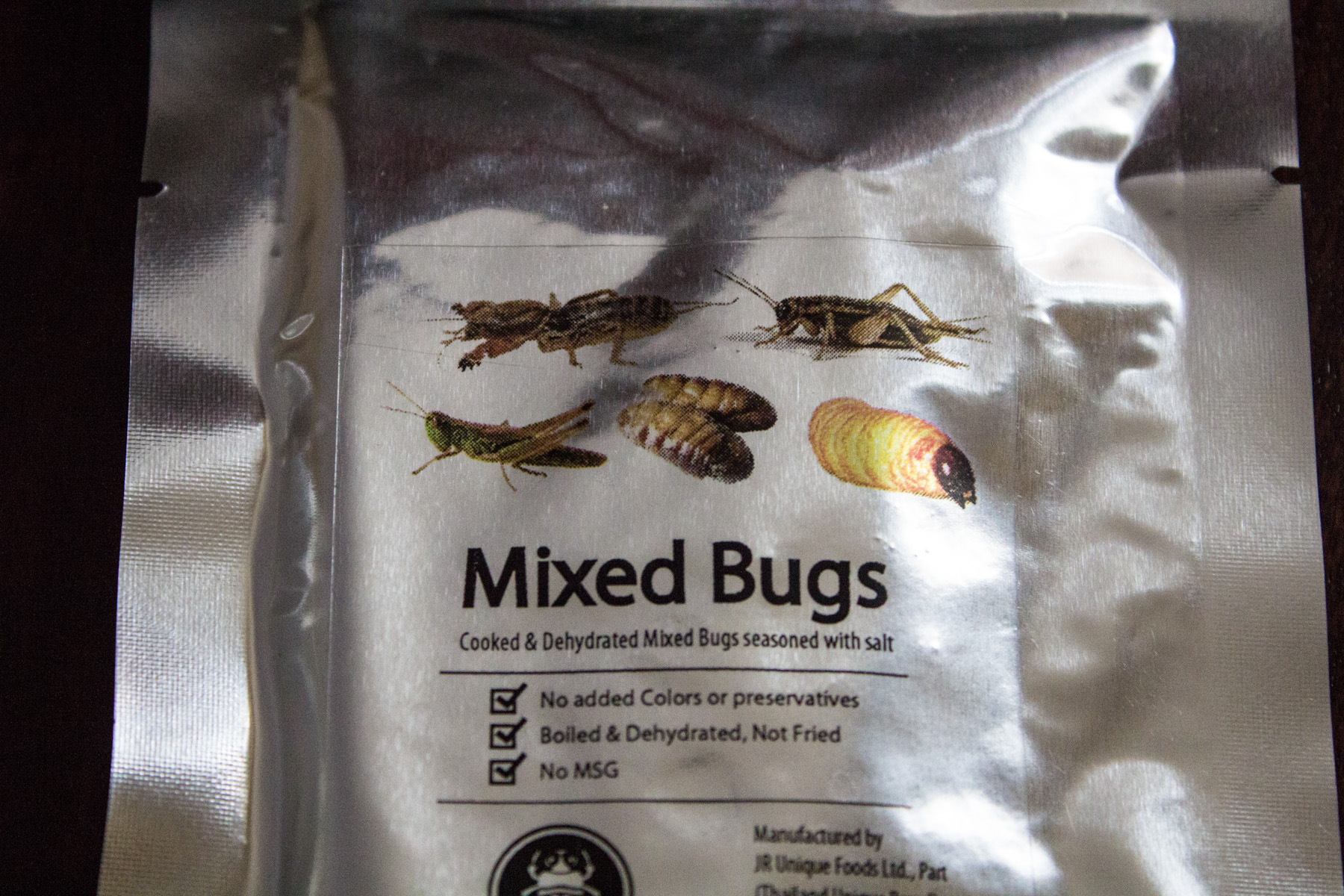Sometimes you encounter a new idea that resonates with you and sticks with you for a while. When I first read about insects as food a few years ago, it stuck, and I would end up talking to friends about it over and over as if I had a clue. Today I put my money where my mouth is, and try eating insects for the first time.
Why insects?
For me, there are two main reasons we should consider insects in our diet:
The environment. Farmed insects such as crickets use very low resources to create a high protein food equivalent to chicken, pork or beef. Crickets breed quickly and convert feed to protein at an efficiency about 20x that of cows, all whilst using negiglible amounts of water. As we wonder how we'll feed a world of 10 billion people, part of the answer will be more efficient foods.
Reducing suffering. Animals can and do suffer, especially in intensive factory farming situations. Smarter animals anticipate harm, and suffer more in advance. Cows, pigs, chicken, fish and squid are all intelligent enough that we should minimise their suffering. We can do that by substituting animal meat with insects in our diet. Since insects are high-protein but low-intelligence, they suffer less.
A first try
With that out of the way, let's get to the fun part. I ordered several bags of mixed insects from Thailand Unique, a site which offers food-grade insects and ships internationally. Thailand seems to have fewer food taboos than Western countries, so many more things are on the menu. Today, my parcel arrived.

I ordered several mixed bags of insects, some cricket flour for baking, and some chocolate covered silkworms to encourage my wife to try some too. All up, including shipping, it costed $AUD 42.45. It's worth saying up front, ordering insects this way is basically a novelty, it's not yet an economical way to eat.
Today we're opening a 15g bag of mixed insects, containing dehydrated grasshoppers, mole crickets, crickets, silkworms and sago worms:

I emptied the packet onto a tray, and attempted to sort each type of insect together. In the end, there was one whole section of carapaces I couldn't really identify. Perhaps they were more mole crickets.

My wife said the smell was "like bad dog food", but it was pretty mild. I set out trying each type of insect one by one. Nearly all of them had a similar, flaky mouth-feel, like eating a spoonful of bonito flakes. Only the silkworms were different, they were gritty and sandy. The overwhelming flavour seemed to be of the carapace, probably chitin. People won't be rushing to eat these on their own.
Over a few minutes, I ate the whole tray. Fortunately, I didn't have a disgust reflex, though I briefly felt queasy about 30 minutes later.
Reflection
In a world of good food options, you're unlikely to encounter these insects as they are, not unless they're rehydrated and heavily flavoured. More likely we'll see them incorporated into processed foods and baked goods, where you won't notice. They might be the protein component of a health bar, or of a vegie pattie. Ground up that way, you can also consume more insects: the 100 grams of cricket flour I purchased contained an estimated 1,112 ground up crickets.
The cheapest food-grade cricket flour I could find costed $88/kilo, locust flour $135/kilo. Needless to say, this is substantially more than meat right now. It would take both economies of scale and competition to bring this price down. Ultimately, that's when people will switch, when it becomes a cheap and available high-protein foodstuff.
In the meantime, I hope you've enjoyed this post. If you find a cheaper price for insect flour, please let me know.